Reprinted from:



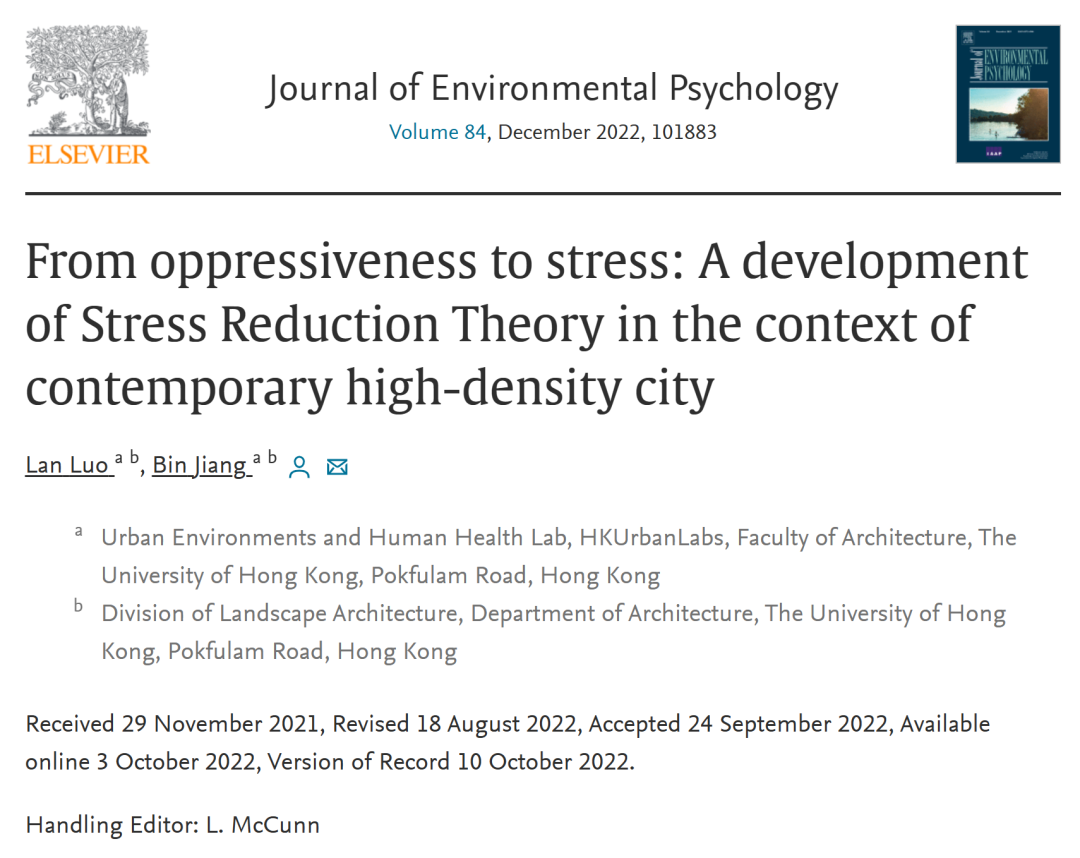

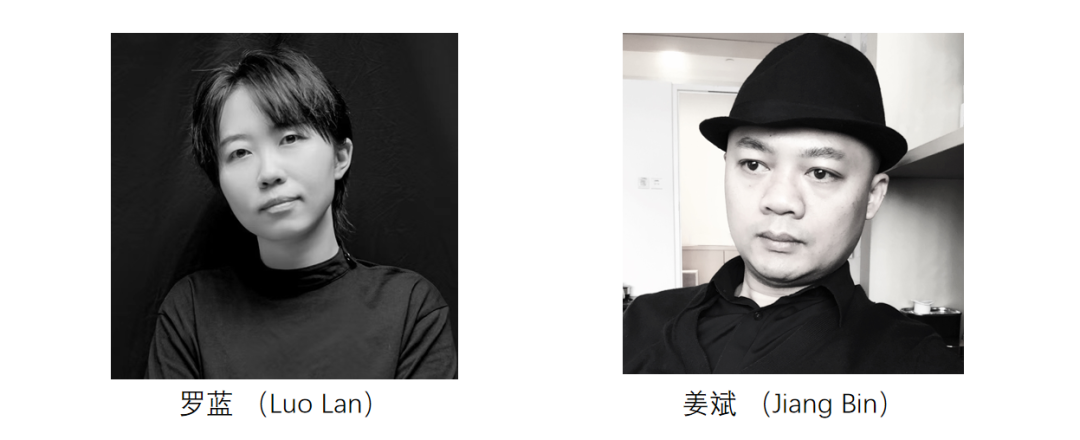

After decades of rapid urbanization, high-density cities have become the main habitat for human beings. In high-density cities, the sense of oppression is recognized as a major environmental perception. It is commonly used to explain the effect of different degrees of green environment on people's psychological stress.
Stress Relief Theory (Stress Reduction Theory, SRT)is a major theory explaining the relationship between environmental exposure and psychological stress. However, the theory ignores the fact that in high-density urban environments that generateThere may be an independent and significant contribution of repression to the development of psychological stress. The present study is a critique and development of stress relief theory.We propose a new pathway model to investigate whether high-density urban environments are characterized byRepression affects psychological stress, and to what extent it does so. To test this pathway model, we recruited Hong Kong residents to conduct a photo-based online experiment, which ultimately collected a total of1396The study found that streetscape affects residents' psychological stress through three paths. The study found that streetscapes influenced residents' psychological stress through three pathways, with depression as the primary mediating variable and perceived environmental quality as the secondary mediating variable. Tree canopy and sky were the most effective mediators in reducing depressing feelings throughtherebyThe two main elements of psychological stress relief are vehicles and billboards, which are the most effective in increasing depression bytherebyThe two main elements that cause psychological stress. This new path model confirms that feelings of depression are the main mediating variable linking streetscape and psychological stress.
1.1 A study of depressing feelings of oppression in a high-density urban environment
After decades of rapid urbanization, high-density cities have become the primary habitat for humans. High-density urban landscapes are considered more oppressive than low or medium-density cities.
In this study the “depression(Perceived Oppressiveness, PO) “meanyour (honorific)Psychological depression induced by the dense urban environment. There are some research threads suggesting that feelings of depression may be a key mediator linking exposure to high-density urban environments and psychological distress among residents, but no studies have clearly demonstrated this link.


Figure 1. Increasing density in urban environments has become a common trend in global development.
1.2 The dangers of psychological stress
Psychological stress is one of the biggest global health challenges in modern society.The accumulation of acute psychological stress can lead to chronic psychological stress, , ,This further leads to depression, suicide, cardiovascular disease, and stroke,2Type 1 diabetes, cancer and other diseases.Psychological stress is not only affected bySocial, economic and demographic factorsand is also influenced by theThe physical environment that people experience in their daily livesThe impact of the


2.1 Predisposing Factors of Psychological Stress: Stress Relief Theory (SRT)
In the field of environmental psychology.Stress Relief Theory (SRT)is an important theory that explains the relationship between environmental exposure and psychological stress. Stress relief theory states thatExposure to natural environments reduces psychological stress, while exposure to artificial environments induces psychological stress.Many empirical studies have been based on this dichotomous theory to compare the stress-reducing effects of different types of natural and artificial (urban) environments. However, few studies have focused on the potential pathways through which the environment influences psychological stress.Thus, stress relief theory may not be a good explanation of the potential pathways through which high-density urban environments influence the psychological stress of urban residents.


Figure 3. Stress Relief Theory by Ulrich(SRT).
2.2 Depression: a potential critical pathway connecting high-density urban streetscapes to psychological distress
High-density streetscapes are often perceived as oppressive, and therefore for residents of high-density cities, theA feeling of oppression (PO) is a common negative experience. A number of studies have verified the effect of streetscape elements on feelings of depression, and others have provided indirect evidence suggesting a possible causal relationship between depression and psychological stress, theLiberal PartyUncertainty about the effect of repression on the relationship between high-density streetscape and psychological distress(Figure)4).
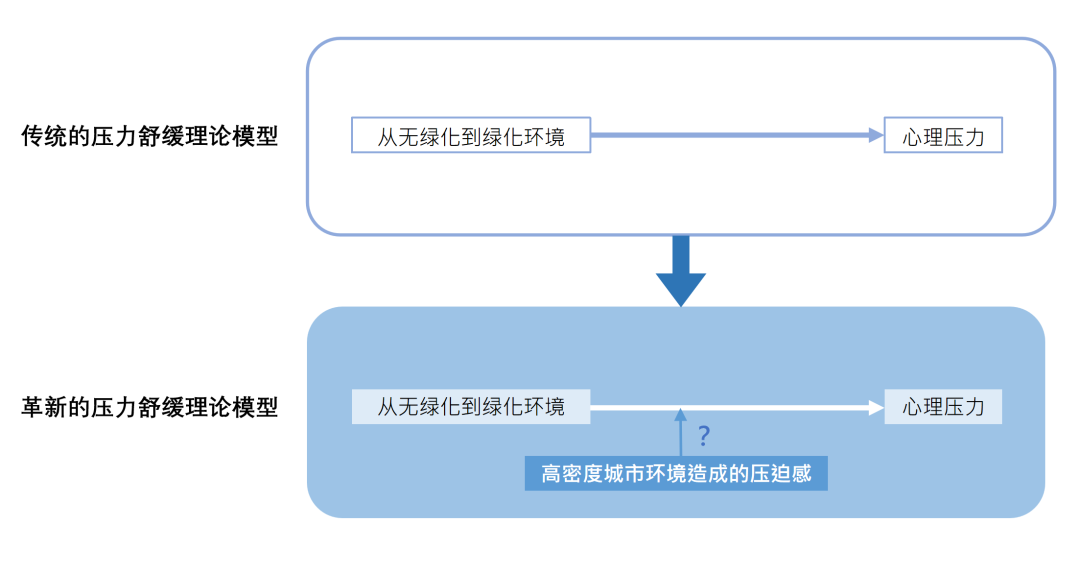

Fig. 4. The effect of depression on the relationship between high-density streetscapes and psychological stress is not yet clear.
2.3 Perceived environmental quality: another potential pathway linking high-density urban streetscapes to psychological stress
Perceived environmental quality (Perceived Environmental Quality, PEQ), , ,It's what people say about the physical environment, , ,Based on the way people process environmental information.Research has shown that perceived environmental quality is a significant predictor of psychological stress responses and that high perceived environmental quality is associated with low levels of psychological stress.
Although some studies have suggested that perceptions of environmental quality mediate the relationship between certain environmental and psychological responses.Yet few studies have investigatedEnvironmental quality perceptionFor high-density street environments–The mediating role of the psychological stress relationship alsoIt is not possible to identify suchIntermediation benefits anddepressionexclusionary rule.
2.4 The effect of streetscape characteristics on psychological stress in high-density cities
Streetscapes (streetscapes) are one of the most common public spaces in cities, , ,Significant impact on the mental health of the population.In this study, we use the streetscape as a proxy for high-density urban space.
Several studies have shown that natural streetscape elements, especially trees, are conducive to reducing psychological stress; whereas artificial streetscape elements can exacerbate negative psychological stress.However, most of these studies were not conducted in high-density cities, and comprehensive research on the effects of streetscape features on psychological stress in high-density cities is still lacking.


seek5. The complexity of streetscape elements is particularly high in high-density urban areas.
2.5 Four important research gaps
(1) Stress relief theory cannot fully explain the complex relationship between exposure to high-density urban environments and psychological stress responses, and traditional binary or categorical comparative approaches need to be updated.
(2) High-density urban streetscapes tend to elicit feelings of depression, yet the role that such feelings of depression play in the relationship between high-density streetscapes and psychological stress is not yet clear, and the study of the feelings of depression may be the key to the further development of stress relief theories.
(3) The mediating role played by perceptions of environmental quality in the relationship between high-density streetscapes and psychological stress responses is unclear, and the extent to which this role is associated with feelings of depression remains unknown.
(4) Whether individual streetscape elements in high-density cities affect psychological stress by influencing feelings of depression is unclear, and the extent of their influence and how they do so (directly or indirectly) remain unknown.
2.6 Proposal for a new path model
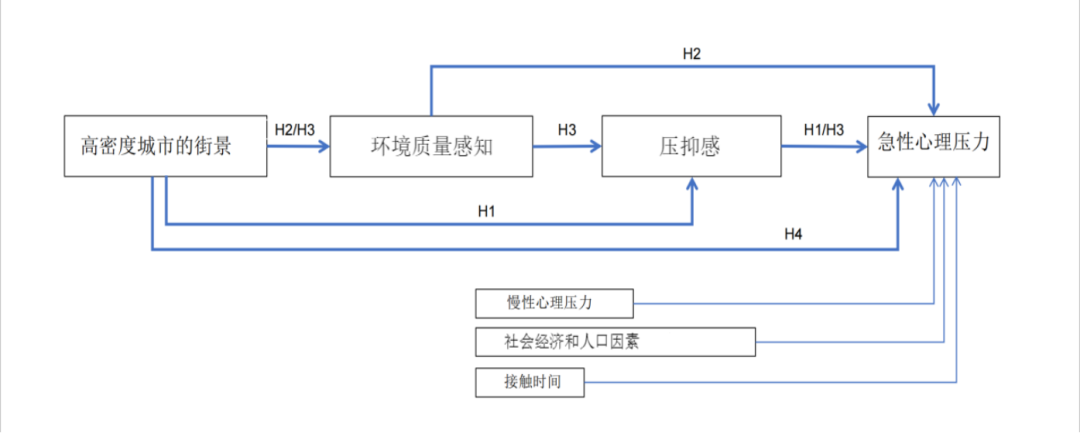

Figure 6. Hypothesized path models (H1, H2, H3, and H4 represent Hypothesis 1, Hypothesis 2, Hypothesis 3, and Hypothesis 4, respectively).
Research Methodology
3.1 Research process
To test the hypothesized path model, we recruited the2600A number of Hong Kong residents participated in aPhoto-based online experiments.1396participants(response rate)53.7%) effectively accomplished the experimental task. The data were collected in2018Year12months to2019Year6MonthThe use of theQualtricsAn online survey created by the app. Each participant randomly watched the90sheet of paperGIFin the image3sheet of paperand were asked to report on each image after viewing thedepressionPerceived environmental quality and level of acute psychological stress.
3.2 Study sites
The study site is located in Hong Kong, which is recognized as a prime example of a high-density city worldwide. The following steps were taken to select the study site:
-
Downloaded a high resolution map using Google Earth Pro.
-
Use ArcGIS to divide the map of Hong Kong into 100m*100m grid cells.
-
One hundred grid cells were randomly selected in the developed area of Hong Kong and a street point closest to the center of the cell was selected along the centerline in ArcGIS, which served as the study site for the collection of Google Street Images.
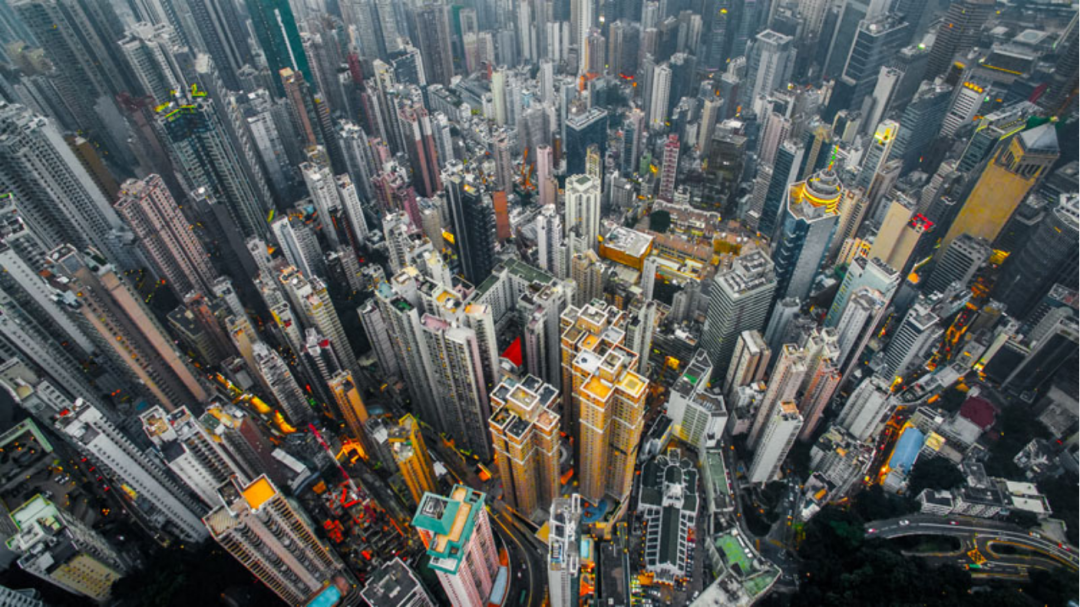

Figure 7. The study site is located in Hong Kong, a representative high-density city.
3.3 Nine angles of street pictures to create experimental stimulus material
We collect Google Street View (GSV) images of 100 study points. In order to simulate real Street View contacts and show more detailed information, we intercepted 9 angles for each point, including 4 horizontal angle images, 4 45 elevation angle images and 1 vertical elevation image (Figure 8), all photos were taken on clear, cloudy or cloudy daytime.
-
There are no obvious traditional decorations; -
There are no buildings or landscapes with significant local historical and cultural features; -
There are no obvious visual obstacles in front of the camera; -
There are no unique landmarks or landscape features; -
No special objects, animals or people.
Through screening, we identified 90 study points and finally created a GIF image for each point using 9 GVS images.
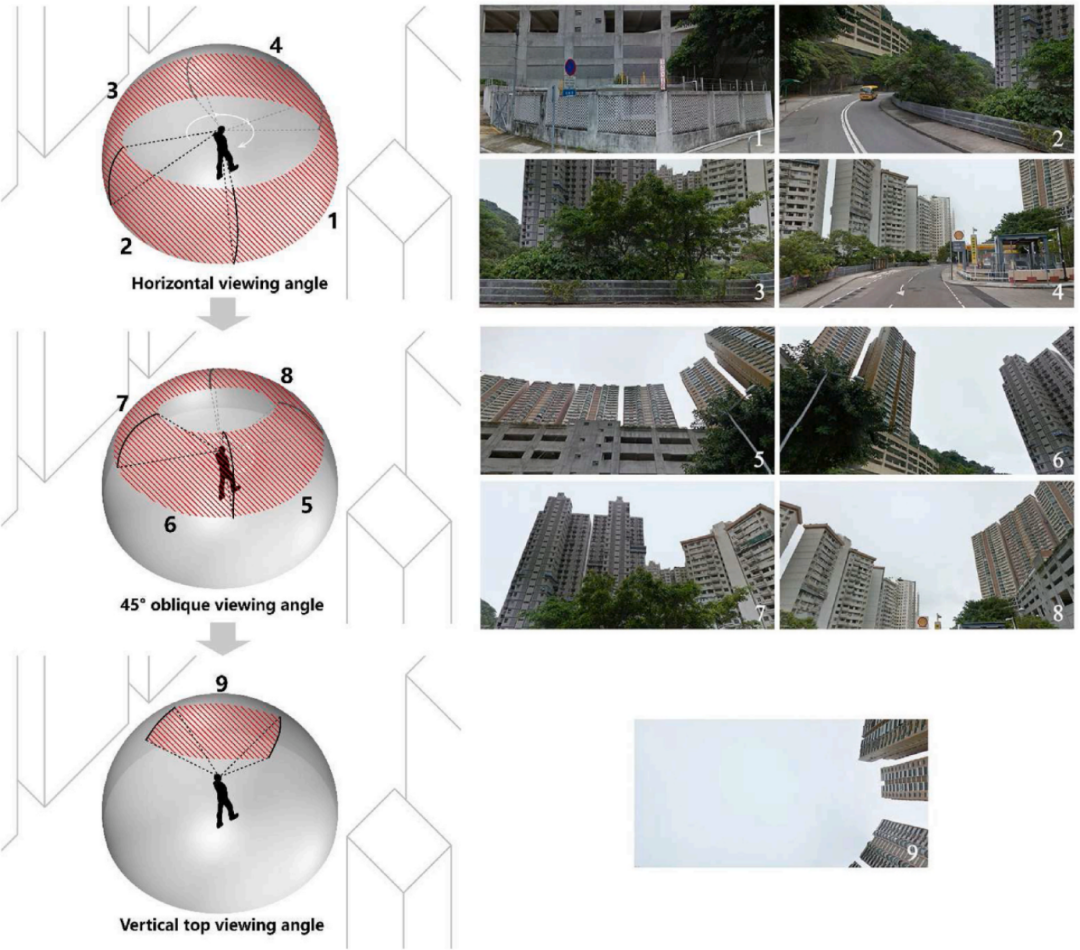

seek8. The GIF image consists of nine views of a street point. The views cover the full 360° view of each sampling point (photo credits in the figure: author's own drawings and Google Street).
3.4 Variable Measurement Methods
3.4.1 sinceVariable: Street View Element
We represent objectively measured streetscape features by calculating the density of streetscape elements at eye level. The streetscape elements were categorized into two parts: natural elements and artificial elements, which include: tree canopies, shrubs, lawns, green slopes, sky, other natural elements, glass curtain walls, other artificial curtain walls, concrete walls, pavements, billboards, vehicles, people, fences, and other artificial elements, respectively. After that we calculated the percentage of each street element in each image by dividing the number of pixels occupied by each element by the total number of pixels in the image. Finally, the average of the 9 images was used as the value for that GIF image.
The calculations show that most of the images have a large span of streetscape elements, which suggests that the selected images cover streetscapes of various urban densities.

seek9. Investigators manually identified and counted the streetscape elements of each GSV image collected.
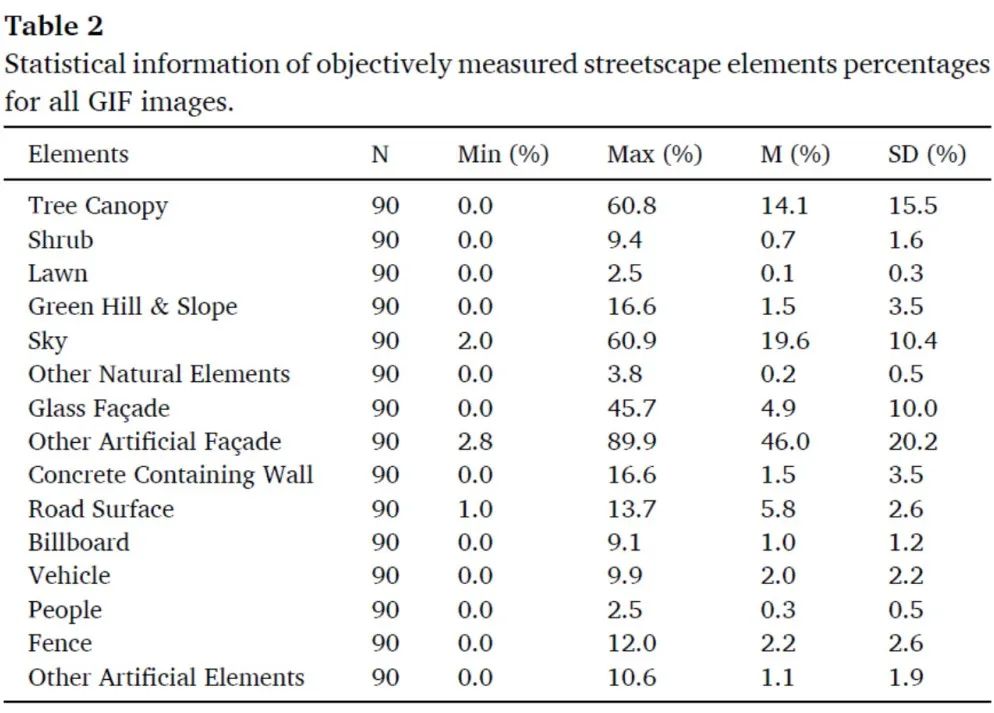
seek10. Summary data on the proportion of each type of streetscape element in the total image.
3.4.2 Dependent variable: self-assessed psychological stress
We have adopted theVisual analog scale (VAS)From anxiety, tension and avoidanceto measure participants' self-reported levels of acute psychological distress.
3.4.3 potentialintermediaryconsiderations: Depression
We also use theVisual analog scale (VAS)Participants were asked to self-assess feelings of depression.
3.4.4 potentialintermediaryFactor: Perceived environmental quality
To test the perceived quality of the environment, we separately tested thevisual qualityperceptual, ,acoustical qualityperceptual, ,degree of greeneryPerception,security levelperceptualandeconomic levelperceptual.
3.4.5 Potential covariates: chronic psychological stress status
adoptionDepression, Anxiety and Stress Scale (DASS-21)hit the nail on the head7Item Pressure Gauge Measurementlong termpsychological stress state.
3.4.6 Potential covariates: exposurelength of time
The duration of exposure to natural environments is associated with many emotional states. In this study, we did not set a specific viewing time, and participants were allowed to view each image as they saw fit to ensure that they were able to get a clear sense of what they were feeling after reporting their feelings after each Street View GIF image.
3.4.7 Potential confounding variables: social–Demographic information and other factors
We control for the following confounders: age, gender, marital status, education level, occupational relevance, per capita household income, weekly hours worked, screen size of the electronic device used in this survey, and the type of city in which the participant resided prior to the age of 15 years and the type of city in which he or she resided in the last three years.
3.5 Data analysis
In order to test the proposed model and hypotheses, we use theIBM SPSS Amos 26.0Software was used for structural equation modeling (SEM). We progressively improve the fit of the model based on statistical indicators (correction indicators).
Study results
4.1 Validation of the model
To validate the measurement model, CFA analyses were conducted on the four constructs, and the reliability and validity of the measurement model were supported.To verify the reasonableness of the structural equation modeling, we tested the correlations between the independent variables and the confounding variables using Pearson's correlation coefficient, and then performed structural modeling analysis. The data results showed that the hypothesized path model had a high model fit, which verified the reasonableness of the hypothesized path model.
4.2 Conclusions of the study
4.2.1 Determined the effect of streetscape elements on psychological distress
We analyzed the standardized total effect of all streetscape elements on psychological stress. Results showed that the density of tree canopy, green slopes, and sky were negatively associated with psychological stress levels after controlling for all covariates. The density of pavement, billboards and vehicles was positively associated with psychological stress levels after controlling for all covariates. Validated.suppose that...4.
4.2.2 Three paths linking streetscape elements and psychological stress were identifiedfootpath
Path 2:
4.2.3 Summary of results
seek11Summarizing the complex model ofWe verified thatThreeclause (of law or treaty)hypothesized pathways, which together explain the relationship between streetscape exposure and psychological stress in high-density cities. Among themDepression (PO)is to explain the effects of streetscape exposure on participants' immediate psychological stress in high-density citiesMain mediating factorsThe following are examples of the types of products that can be used in the field, either directly or through theIndirect (through environmental quality perception))exclusionary rulestresscome into being50.2%Effectiveness of the impact of the, , ,And environmental quality perceptions (PEQ)beSupportive mediators.
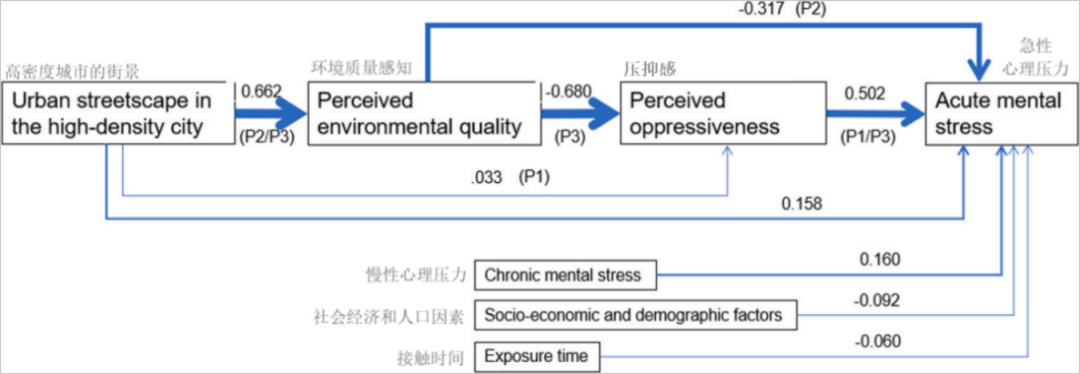

seek11. Path model summary. Note: P1, P2, and P3 are path 1, path 2, and path 3, respectively.
talk over
5.1 Interpretation of key findings
5.1.1 A new roadfootpathModels: willdepressionIncorporation into Stress Relief Theory
In stress relief theory (SRT) In the early stages of the proposal, repression was not taken into account. And to the best of our knowledge, research on the theorythe greater partnot take place in the context of a high-density city. As a result, theStress Relief Theory Needs Updatingto adapt to the evolving urban environment.
roots or stems of plantsexploreCritiquing and developing the theory of stress relief.A more comprehensive pathway model is proposed that willlow densityUrban streetscapes and psychological stress are linked and demonstrated to bedepressionThe important intermediary role of. In addition, our model is better than most past stress relief theory-basedBinary or categorical comparisonsmore comprehensive and detailed studies.roots or stems of plantsexplorefirst attemptInExploring the Potential of Streetscape Elements for Psychological Stress in a High-Density Urban Contexttrails.
5.1.2 depression: linking the streetscape of high-density cities and the psychological stress of majorcentermediator
We found thatDepression is a major medium for connecting urban streetscapes to psychological pressure.We offer three possible explanations for this:
-
ground"psychological evolution"doctrinal, , ,depressionMainly bysee thatHigh-density urban streetscapeoflaborsubstanceor space-induced, such as high-rise buildings, hardened roads, automobiles and billboards, , ,suchIt will make humans feelThe instinctive feeling of dislike and(negative prefix)follow or pursue. -
Streetscapes in high-density cities oftenbeDensity, complexity and confusionThe.May cause feelings of depression, , ,This sense of repression has nothing to do withpersonal spaceinvadedrelated to a sense of loss of control and thuslikelihoodCauses psychological stress. -
low densityUrban streetscapes cause a sense of oppression possibly due to theLower visual permeability limits the understanding of the surrounding environment and leads torightitselfsuretyconcerns, which in turn cause psychologicalStress.
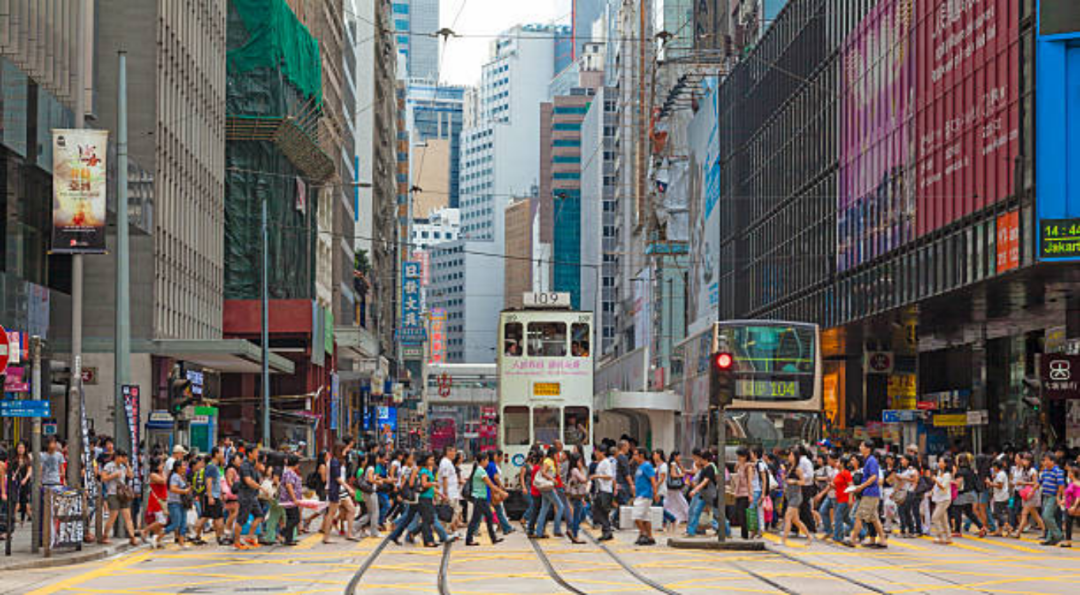

seek12. The streetscape of Hong Kong, a high-density city, creates a sense of density, complexity and chaos.This in turn causes feelings of depression and psychological stress..
5.1.3 Perceived environmental quality: linking streetscape engagement in high-density citiesThe feeling of repression.and supportive mediators of psychological stress
We found that the effect of streetscape is mainly on depression and then on psychological stress through the perception of environmental quality, which suggests that the perception of environmental quality has a major role in the depression ofintermediaryeffect plays a role in theSupporting role.
The supporting role of environmental quality perception can be explained as follows:
-
Greener streetscapes tend to be more popular with thePeople likeIt's possible.willProduce betterEnvironmental quality perception. -
green landscapepossibleact asvisuallybuffer, , ,minimizePeople with artificial featuresVisual contact and thuslowerThe depressing and psychologically stressful nature of the streetscape. -
low densityIn the street scenecongestedTransportation andpedestrian flowgenerated noisemay produce poor perception of the acoustic environment, which in turn leads toFeeling overwhelmed and nervous. -
Urban streetscapes in more affluent areas tend toProviding better landscaping, amenities, and maintenance resulted in theHigher environmental qualityperceptual, , ,feasiblepeopleMore comfortable,porridgeandEnergetic.therebyHelps reduce feelings of depression and psychological stress. -
suretytouchquibbleyour (honorific)oflow densityStreet scenes tend to make people feel more free and relaxed, which can reduce feelings of depression and psychological stress.
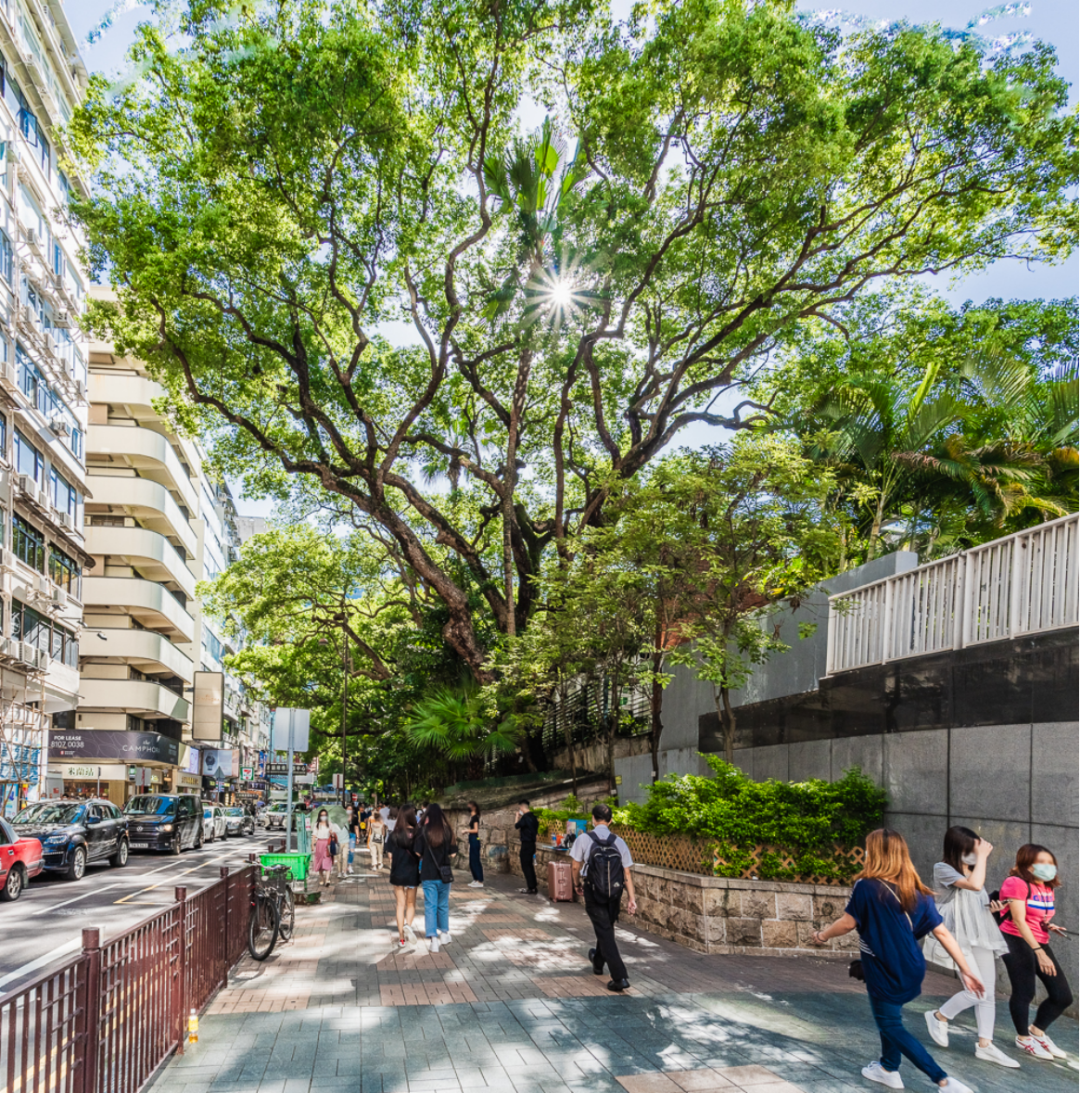

Figure 13. greenerLandscaping can enhance the perceived environmental quality of a street, which in turn reduces feelings of depression and psychological stress.
5.1.4 major streetscape elements by reducing or increasingadd a sense of oppressionmoviePsychological stress
The study found thatThe canopy and the sky are the two most importantBy reducing the feeling of depression(indicates contrast)lowerstressedelements, and vehicles and billboards are two of the largestthat increase psychological stress by inducing a feeling of repressionElements.The reasons are explained below:
-
The presence of tree canopies can enhance the quality of the environment due to people's innate preference for the natural environment. -
Tree canopies can act as visual buffers to screen concrete walls, reducing the perception of building strength and danger.


Figure 14. Tree canopies can act as a visual buffer, shading and diminishing the oppressive feel of taller buildings.
(2) The role of the sky in reducing depression
-
The wider skyscape serves as a psychologically restorative resource that reduces feelings of depression and lowers psychological stress.
-
The skyscape is dynamic and has a high spatial richness from which one can see many other natural elements.
-
More sky in the field of view can provide a larger and deeper range of vision.
-
The proportion of higher skies in the streetscape is negatively correlated with building height and width, while the proportion of higher skies is negatively correlated withSpace between buildingsThere is a positive correlation.Higher sky ratioGiving people a greater sense of space, light, privacy and freedom may also reduce feelings of depression and psychological stress.


Figure 15. More sky in the field of view (left panel) is associated with weaker feelings of depression and lower psychological stress.
(3) Vehicle triggers for psychological stress
-
Traffic congestion creates visual andaudiblepollution, leading to a sense that the environmentofConfused and out of control.
-
The rapid movement of vehicles increases thepeopleThe sense of invasion of personal space andrighttraffic accidentworrisome.
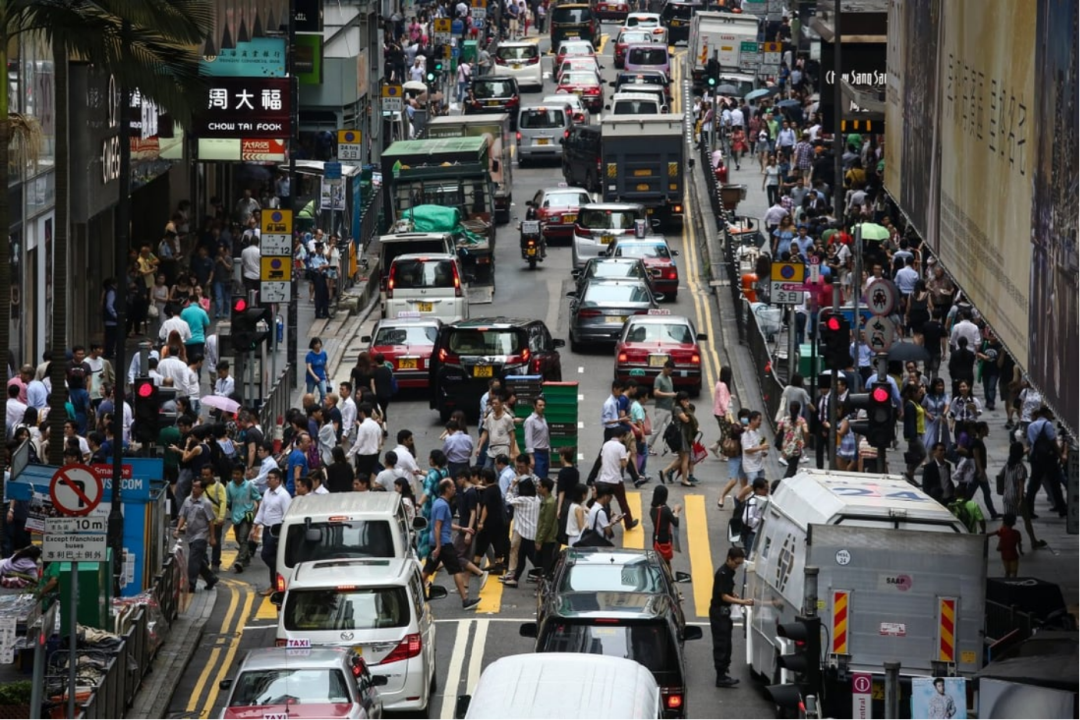

Figure 16. Vehicular congestion in the Central belt of Hong Kong.
(4) billboardsCauses of depression
-
Exaggerated colors for billboardsandformalityconsumePeople's attention, delivering complex, confusing and overloaded informationSuchformalityIt's usuallyAggressive, depressing and unpleasant.
-
Billboards mayshelter fromThe sky above you.andin-streetA sense of spatial extensionlead toless favourablevisuallymalleable.
-
In the age of consumerism, billboard advertisements encourage overconsumption, causing psychological stress and status anxiety.
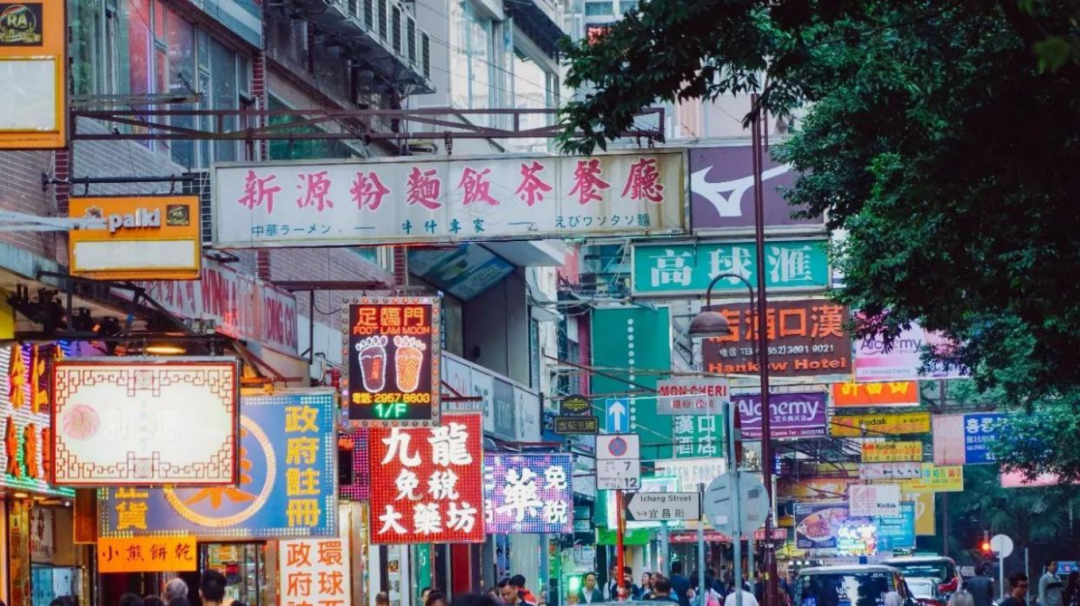

Figure 17. Streets in the Mongkok area of Hong Kong are cluttered with billboards.
5.2 Theoretical and practical contributions
5.2.1 theoretical contribution
This study of stress relief theory(SRT) was critiqued and developed.The study proposes and validates a new pathway model to explain the relationship between high-density urban streetscapes and residents' psychological distressthat updates our understanding of the relationship between environmental exposure and psychological stress. The theoretical model specifiesDepression as an important factor in explaining psychological stress in high-density urban environments. From this, we point out thatTraditional stress relief theory (SRT) has important shortcomings.
5.2.2 Practical Contributions
The study proves that repression is a major mediator of streetscape and psychological stress in high-density cities, sending a new message to the government and society that repression plays a key role in explaining residents' psychological stress.
To promote the mental health of urban residents, reducing the depressing nature of the streetscape is an important environmental intervention. We recommend that urban planners and landscape architects consider the following options to reduce residents' psychological stress and, as a result, promote their overall physical and mental health:
1. Increased street greening.
-
Additional street trees are strongly recommended as trees along the street only take up a small amount of ground space, but their dense canopy can visually add more greenery to the streetscapeand canCreates a visual buffer that obscuresbuilding.
2. Emphasizing the skyscape of urban streets.
-
Avoid narrow and unchanging sky forms.
-
Through the addition of buildingshigh degreeofvariations, , ,InKeeping the average plot ratio essentially unchangedofat the same time, , ,creationhavevisual rhythmThe skyscape of the.
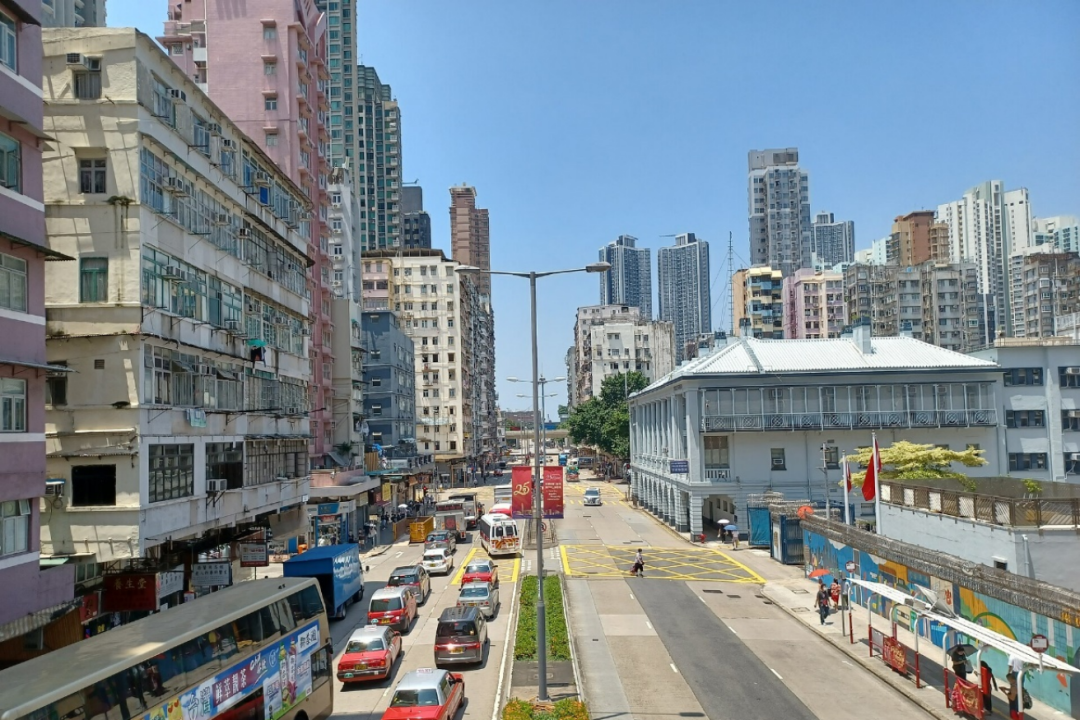

Figure 18. avoidsnarrow and monotonousof the sky.Create skyscapes with a visual rhythm by adding variations in building heights.
3. Controlling the number of vehicles on the streets.
-
Rearranging vehicles through exterior or underground roadways to leave more space for pedestrians.
-
Create more green landscaping that acts as a physical separation and visual buffer between driveways and sidewalks.
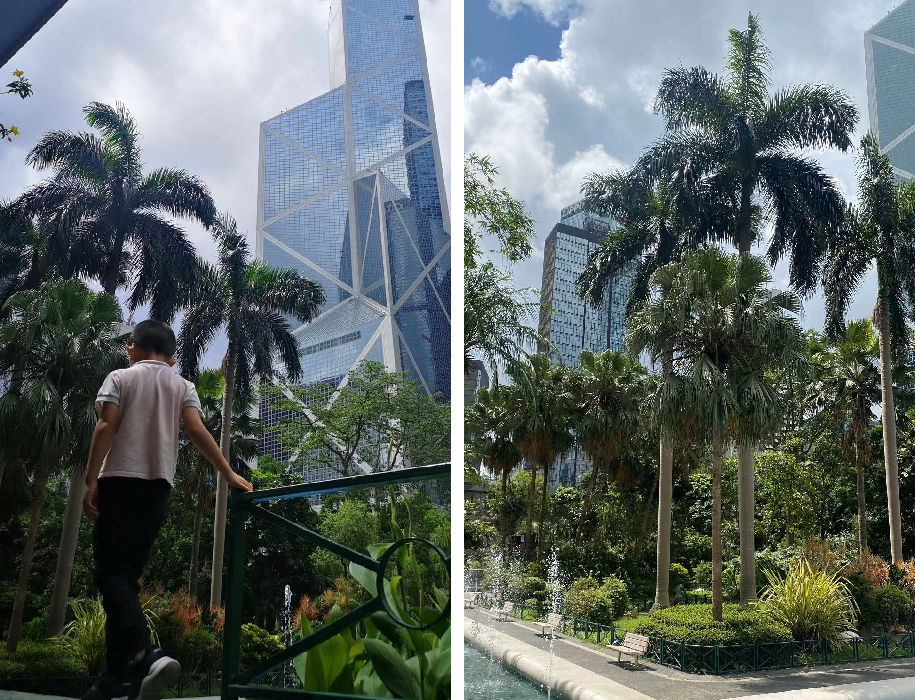

Figure 19. greenscapes act as a separation and visual buffer from the street.
4. Reduction and regularization of street billboards.
-
Reduce side billboards or replace them with frontal billboards to mitigate their negative impact on visual density and range.
-
Keep billboards promoting luxury goods, tobacco, alcohol, violence and containing sexual innuendo to a low level and confine them to designated areas.
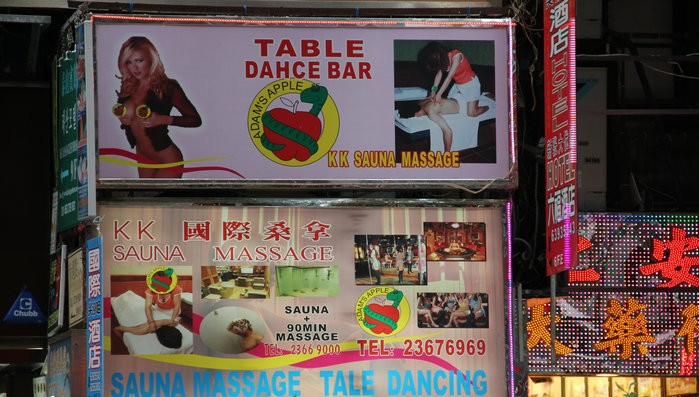

Figure 20: Billboards with erotic references on the street need to be reduced and regulated.
-
This study used a set of two-dimensional photographs to demonstrate environmental features; future studies could be conducted by using 3D technology, which could provide participants with a more realistic and immersive experience, as well as demonstrating three-dimensional spatial configurations and contexts.
-
This study can be further conducted in the form of a field experiment, where a realistic environment would increase the validity of the findings, but the control of environmental confounders would be a challenge.
-
This study was conducted only in Hong Kong, a high-density modern city in East Asia. To test the generalizability of the findings, in the future we may select other high-density cities with different cultures, geographic locations and climates as study sites and repeat the same study with a larger sample size.


Figure 21. Emerging VR technologies are able to simulate real-world scenarios and provide participants with an immersive sensory experience.
Conclusion
This study identifies a new pathway model to account for theRelationship between Streetscape-Depression-Psychological Stress in the Context of High-Density CitiesConclusions of the studyCritique and development of stress relief theory. At the same time, the study provides the government and the community with a new message ofDepression has a direct impact on mental stress and health.
This study identifies the important role of tree canopy, sky, vehicles and billboards in reducing feelings of depression and psychological stress. Guidance and encouragement are provided to create higher density cities with moreLow Depression StreetscapeThe "concrete jungle" benefits the inhabitants who live in it.
Author Contribution Statement
Roland: Research Methods - Development of Statistical Models, Data Collection and Management, Data Analysis, Visualization.most membersOriginal writing, review and editing of writing.
Bin Jiang: Research Idea, Research Methodology-Research Design, Data Management and Collection, Partial Original Draft Writing, Review and Editing of Writing, Funding Acquisition, Project Management, Resources, Supervision.
Ethics Statement
This study was approved by the Human Research Ethics Committee (HREC) of the University of Hong Kong in 2019 prior to data collection. Participants were informed of their rights through an electronically signed informed consent form.
Declaration of interest
There are no known competing financial interests or personal relationships, or work that may arise to influence the reporting of this article. The manuscript was published with the consent of all authors. The work described is original research and has not been published or considered for publication elsewhere.
express gratitude (esp. in public)
Image source
Cover image: http://inews.ifeng.com/51099680/news.shtml?&back
Figure 1:http://www.bbc.com/travel/story/20200122-the-icy-side-to-hong-kong-history
Figure 7:https://planning.unc.edu/event/advancing-sustainability-livability-high-density-city-hong-kong-polyu-perspective/
Figure 12: https://www.highspeed.mtr.com.hk/en/services-facilities/tree-art.html
Figure 13:https://www.escofet.com/en/projects/streetscape/hung-luen-road-tko126
Figure 14:https://www.greening.gov.hk/en/greening-landscape/landscape-corner/index_id_25.html
Figure 15:author's own photograph
Figure 16:https://www.sohu.com/a/208862210_390121
Figure 17:https://www.scmp.com/news/hong-kong/transport/article/3016813/congestion-charges-hong-kong-motorists-only-way-solve
Figure 18: Theauthor's own photograph
Figure 19:author's own photograph
Figure 20:https://www.3dmgame.com/news/201209/57617.html
Figure 21:author's own photograph
Images not specifically labeled are from the original paper.
Laboratory Director Profile



Jiang Bin
Associate Professor, Doctoral Advisor
Director, Laboratory of Urban Environment and Human Health, The University of Hong Kong
Academic and Professional Profile
Academic services
END
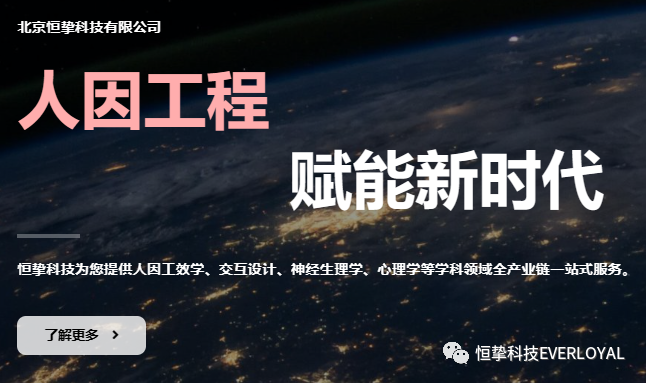


The driving human factors system, virtual reality graphical editing software, light environment psychological assessment system and psychological and human factors experimental teaching system developed by Hengzhi Technology have entered the domestic market.
As the sole agent of Poland Cortivision NIR, Russia Mitsar EEG in China, the sole agent of Italy BTS surface EMG and other biomechanical and gait analysis products in China, and the sole agent of Netherlands Noldus Behavioral Science, Sweden Tobii Eye Motion Instrument, Netherlands MindMedia Physiology and Biofeedback, US Biopac Physiology, US ETT The domestic licensed agent of products such as olfactory/taste stimulator. The high-tech products operated have served the top universities and the highest level of scientific research units in China, including Tsinghua University, Beijing Normal University, Northeast Normal University, Yanshan University, Qiyuan Laboratory, Xi'an University of Architecture and Technology, Northwest Agriculture and Forestry University of Science and Technology, Shenzhen University of Technology, Xi'an University of Science and Technology, Shanghai University, the Second Institute of Aerospace, 27 and 28 of China Electronics Technology Group, while providing technical support for ink Netease, Huawei technology to provide technical support, in the field of talent training, scientific research cooperation, transformation of results and other scientific and technological areas of continuous in-depth cooperation.



This article comes from the WeChat public number: EVERLOYAL







































